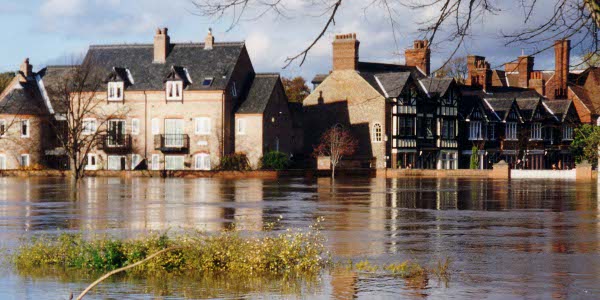
October 22, 2015, by mjroyer
Floods as Heritage
Limoges workshop
At the beginning of October, was held the Floods as heritage workshop at the Université de Limoges by the Chair on Environmental capital and sustainable management of waterways (Capital environment et gestion durable des cours d’eau). With 14 presenters (myself included) from the UK, France, Algeria and Tunisia it was an occasion to look at the role (if any) floods play in cultural heritage. The two days were centred on five key themes: memory, resilience, living with risk, socio-cultural heritage and creative heritage.
Memory and resilience
Memory was discussed in a variety of ways. From the immaterial such as floods passed on in poems and in stories to the tangible signs of flood remembrance through flood markers, memorials and pictures. Memory is a fickle beast and sometimes even extraordinary events don’t get remembered. That is often the case when they are overshadowed by larger or more dramatic events. Some talked about not only memory but also forgetfulness. These can be lost stories as they are forgotten from generation to generation. But the physical world also forgets. Bridges bearing markers can be washed away; signs on buildings can be eroded or wilfully erased; documents and research can be in a different language or destroyed. Both remembering and forgetting are needed if people are to keep living by the river. The key being in finding the right balance remembering to promote resilience and forgetting to allow a peace of being.
Resilience is the capacity of an individual or group to properly adapt to adversity and stress. While living with risk is associated with how the communities around rivers adapt the environment and to the environment. Through the presenters, we saw how long absences of floods and the forgetfulness associated with it can lead to a decrease in resilience and an increase in risky behaviour. Building in floodplains and the deterioration of flood infrastructure are some examples of such behaviour. The need for public understanding of the risks and preventative measures were brought up by all. River systems that cross over borders were used to stress this imperative with areas that remember past floods (in the forms of both institutional and community memory) suffering fewer losses and damages than ones that have not.
Cultural and creative heritage
The socio-cultural and creative heritage themes brought up the question of can floods be a heritage in and to themselves. Much of the answers seemed to rest on how floods are perceived. Many religious texts give floods a positive connotation as a tool used to rid the world of evil people, in other texts it is a punishment from the heavens for some miss deeds that must be correct. These images influence the way people adapt to floods as they may be seen as inescapable. However these perceptions are changing through a better understanding of flood mechanisms. The immobility linked to the fatality of old is mixed with insurance contracts and flood management programs. Floods are also perceived in some areas as an occasion to renew community ties and to strengthen the sentiment of belonging. The perception of flood events is an ever evolving phenomena and care must be ensured to avoid taking them out of context, of limiting their nature to an economic one or of freezing them in time and space.
Floods are highly emotional events and they take on individual characteristics based on the time or the region. This workshop, however, showed the ample similitudes in issues faced by people living in flood areas, by institutions and by research on the topic. Have you lived through a flood? How has it affected you? In what ways do you remember it? What things do you do differently now?
No comments yet, fill out a comment to be the first


Leave a Reply